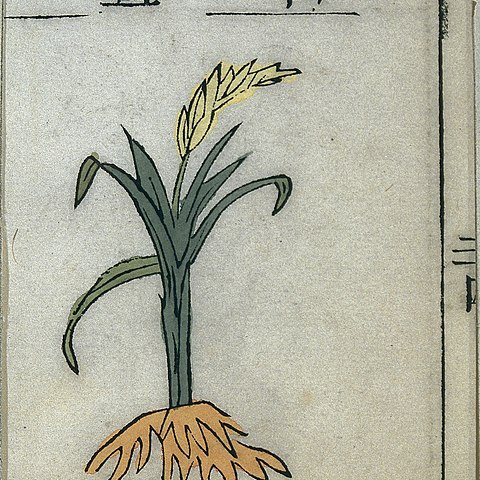Pseudostems ca. 1.5 m. Ligule 2-cleft, 1--2 cm, villous; petiole 5--6 cm; leaf blade oblong, 45--70 × 10--14 cm, glabrous, base attenuate, margin scabrous, ciliate, apex acuminate. Panicles cylindric, ca. 30 × 5 cm, pubescent; branches numerous, 1.5--3.5 cm, apically 4--8-flowered; bracts very small or absent; bracteoles oblong, ca. 1 cm × 4 mm, membranous. Pedicel 2--3(--8) mm. Calyx ca. 9 mm, apex 3-toothed. Corolla tube equaling or slightly longer than calyx; lobes linear, ca. 1 cm × 2 mm. Lateral staminodes subulate. Labellum white with purple stripes, oblong or elliptic, ca. 1.2 × 1 cm, base slightly contracted, apex emarginate or entire. Filament 1.2--1.5 cm; anther ca. 6 mm. Ovary globose, pubescent. Capsule red, globose, 7--10 mm in diam.; pericarp thin, fragile. Seeds 5--7. Fl. Apr, fr. Jun.
More
An erect ginger family herb. It keeps growing from year to year. It grows 1.3 m tall. The leaves are oblong and 60 cm long by 12 cm wide. There are fine teeth along the edge. It tapers at the tip. The flower spike is at the top of the plant. Each bract has 4 flowers. The flowers are 3 cm wide and white with red. The fruit is a round capsule. It is 1-3 cm across. There are 5-7 seeds which have 3 angles.

